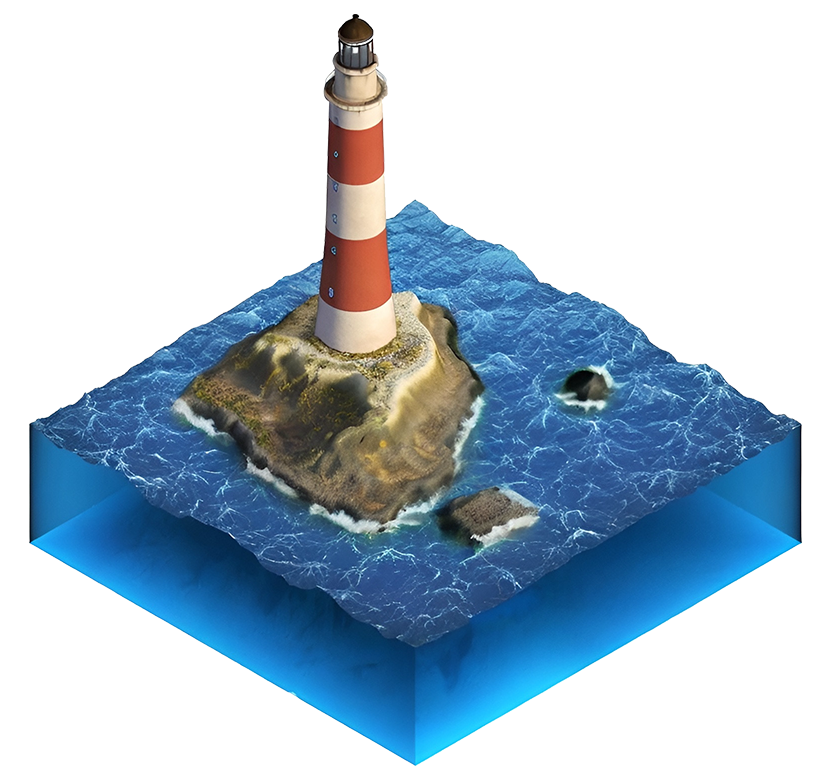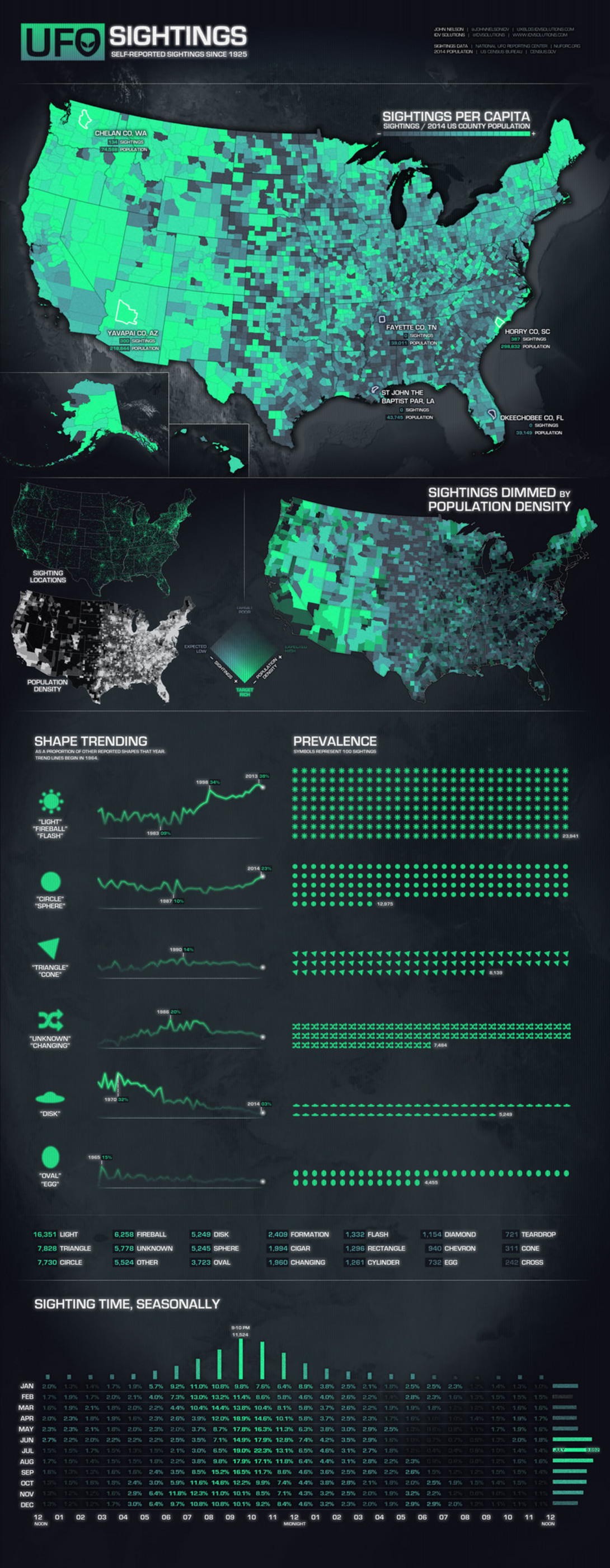100 Lighthouses of the United States – The Ultimate Chart
Lighthouses are a peculiar obsession. Most people never think about them, except maybe when they’re featured in some moody Instagram post or the backdrop of a Nicholas Sparks movie. But for the people who do care, lighthouses aren’t just old towers they’re symbols of human resilience, technological evolution, and, frankly, the kind of craftsmanship we don’t see much anymore.
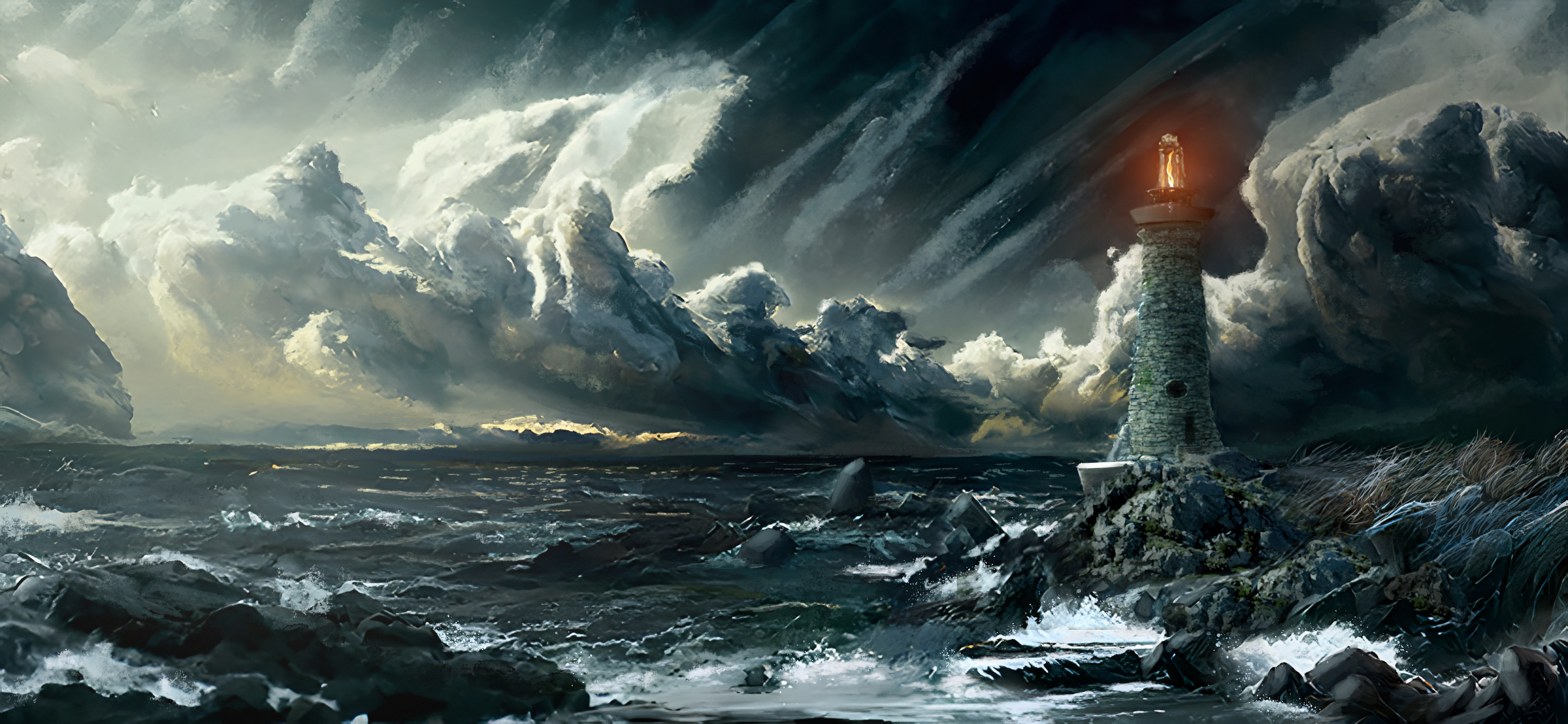
Historically, these structures existed for one reason: to stop ships from slamming into rocks. That’s it. Before GPS, before sonar, before even reliable maps, mariners relied on these giant candles in the night to tell them where land was. And if you think that sounds primitive, consider that the first known lighthouse, the Pharos of Alexandria, was built over 2,000 years ago and stood for centuries before an earthquake took it out. Even back then, people understood that if you’re sailing blind in the dark, you need a guiding light.
But lighthouses are more than just functional. They’re also testaments to human ingenuity. Take the Eddystone Lighthouse off the coast of England. The first one, built in 1698, was literally swept away by the sea. The second one burned down. The third stood for over a century before engineers figured out how to improve it. Each failure was a lesson, each rebuild a triumph. Even in the U.S., lighthouses have had their own battles many were destroyed by storms, neglect, or, in some cases, outright war. The Cape Hatteras Lighthouse, one of the most famous in America, had to be physically moved in 1999 because the ocean was eroding the land beneath it. That’s right engineers picked up an entire lighthouse and walked it inland to keep it from collapsing.
Lighthouses are more than just navigational aids; they are symbols of resilience, history, and human ingenuity. Across the United States, each coastal state has at least one lighthouse of significant renown. Here are some of the most famous and beloved lighthouses from each region:
East Coast Icons:
The lighthouses on the East Coast are some of the most famous historical landmarks in the country standing sentry along the Atlantic shoreline for centuries.
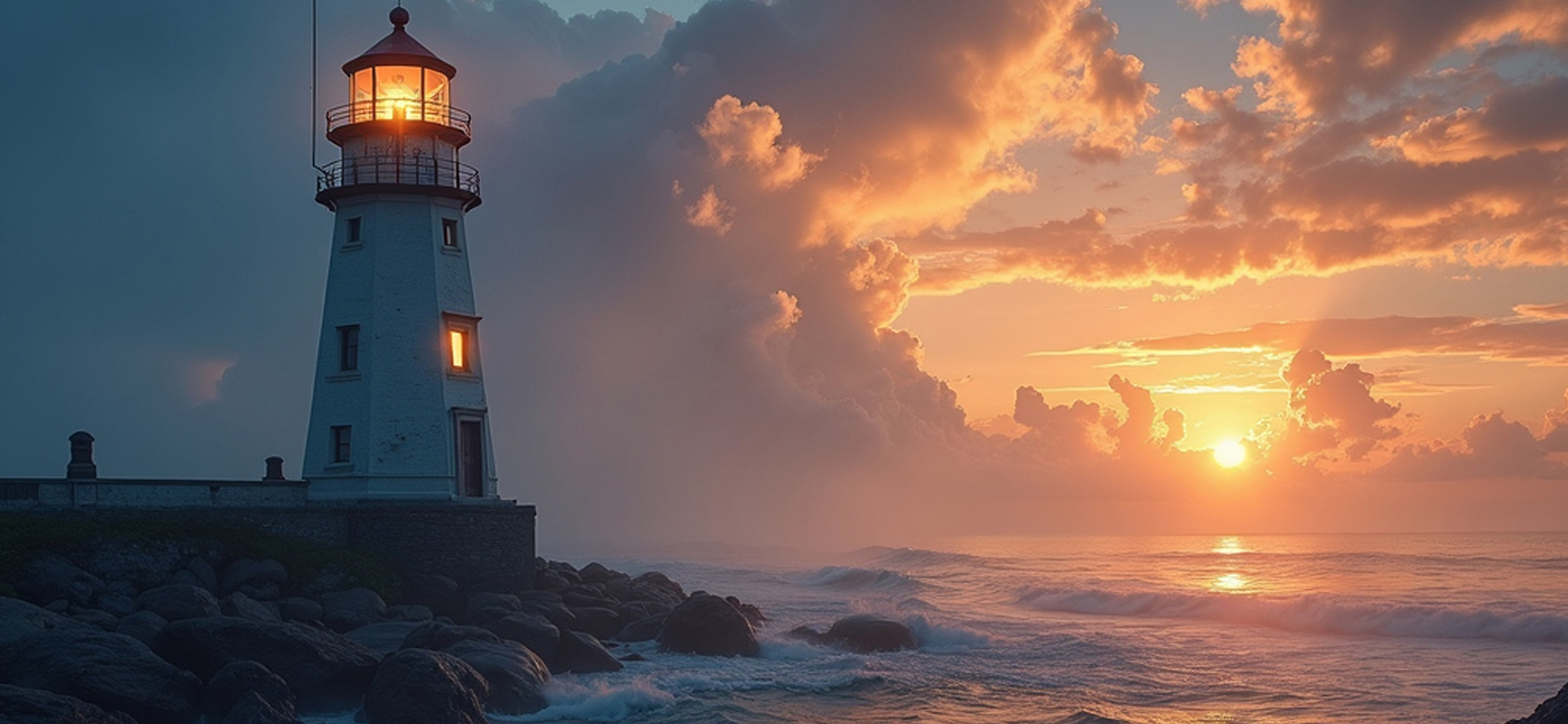
From the rugged coasts of New England to the tempests of the Outer Banks, these structures have kept countless sailors safe. Whether the lighthouses are the earliest ever built in the U.S. or renowned for their striking looks, they all possess a compelling backstory that draws visitors to them year after year.
Maine – Portland Head Light
Portland Head Light is one of the most well-known lighthouses in America. It sits on the rugged cliffs of Cape Elizabeth and has stood tall and bright since being commissioned by none other than George Washington in 1791.

Since then, this beacon has weathered centuries of storms, wars, and technological shifts. In terms of lighthouses, it has classic New England charm. In terms of coastal Maine, it has a signature look. And in terms of lighthouse photography, it ranks as one of the top subjects in the country. There are two key reasons for this: first, the lighthouse itself is striking; and second, without question, the scene in which it sits is quite dramatic.
Massachusetts – Boston Light
To discuss the history of lighthouses in America, one must begin with Boston Light. Erected in 1716, it was the first lighthouse in what would become the United States. For more than three hundred years, it had been standing as a guiding beacon.
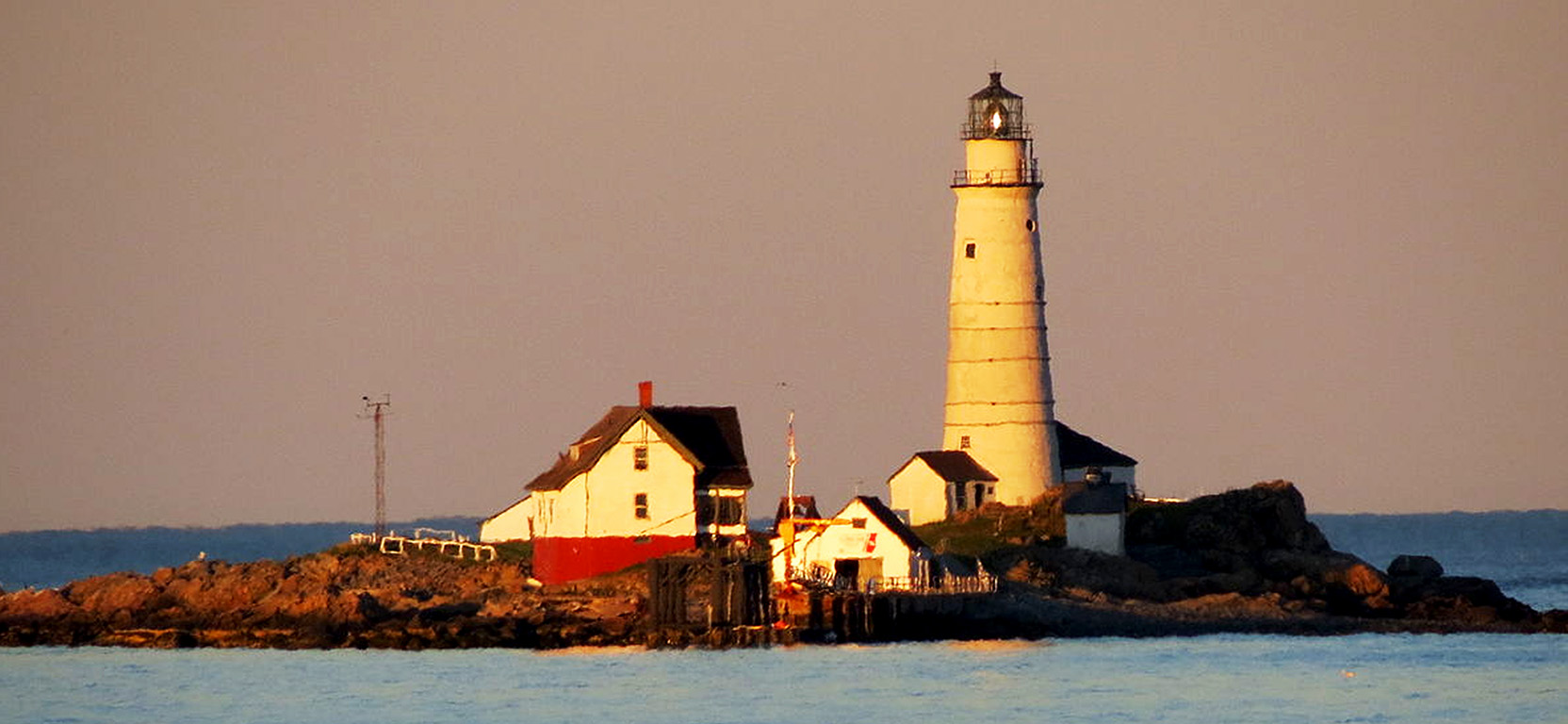
Destroyed in the Revolutionary War, the British managed to blow it up. But like a true symbol of resilience, it was rebuilt in 1783 and remains an active aid to navigation. Sitting on Little Brewster Island in Boston Harbor, going out to see it reunited a family member to a living piece of maritime history.
North Carolina – Cape Hatteras Lighthouse
Everything about the Cape Hatteras Lighthouse is larger than life. It stands as the tallest brick lighthouse in America, stretching a staggering 208 feet into the air. Its bold black-and-white spiral pattern makes it one of the most recognizable lighthouses in the world.
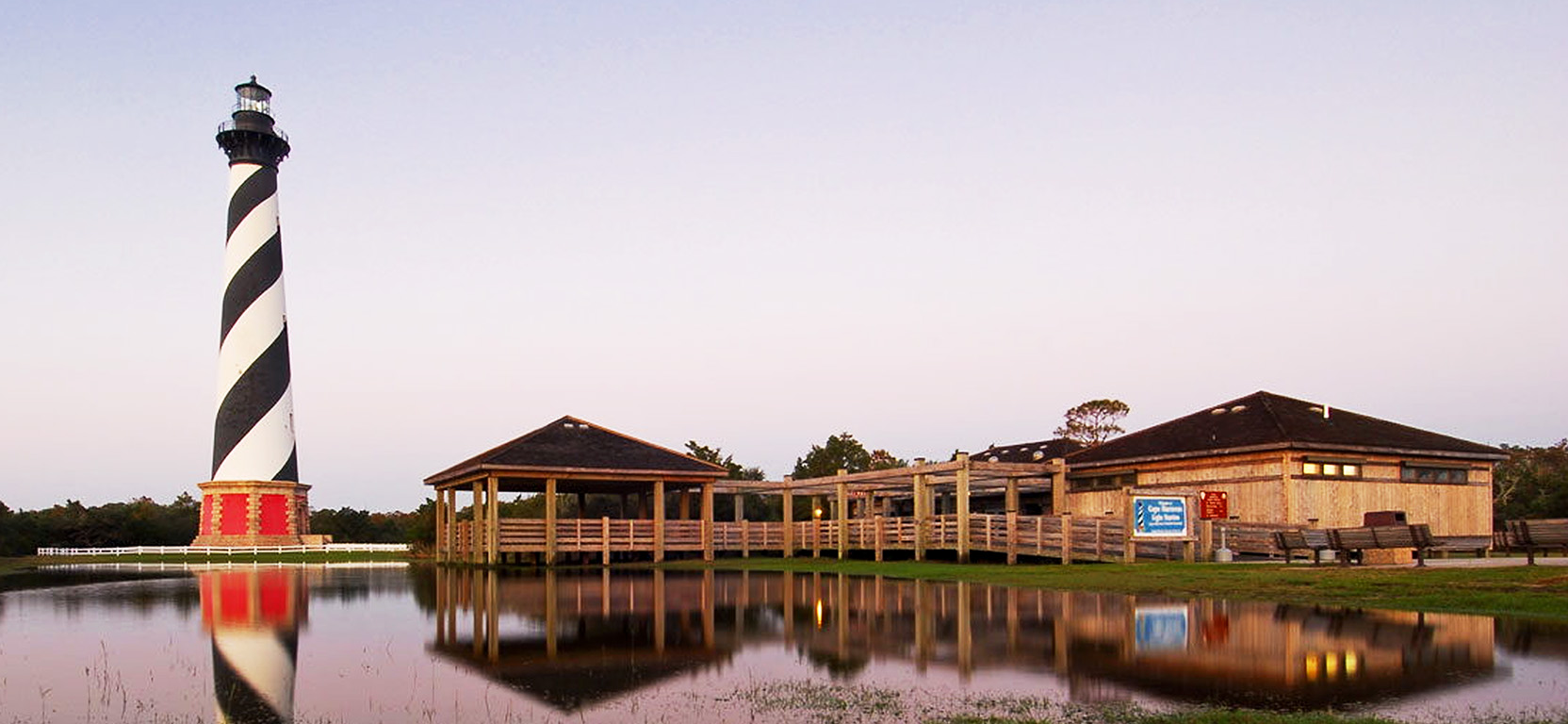
Though built to warn sailors of the dangerous Diamond Shoals where countless vessels went to the bottom this marvelous structure also serves as one of the best-looking lights in the country. Not content to let Mother Nature have her way, engineers in 1999 pulled off a remarkable feat and moved the entire structure inland to escape the relentless threat of shoreline erosion.
Florida – St. Augustine Lighthouse
If ghost stories are your style, then St. Augustine Lighthouse is the lighthouse for you. Located on the Florida coast, this black-and-white striped tower has stood watch over maritime history and, according to some, serves as a museum for the paranormal.

Claims of hauntings at the lighthouse date back to well, as long as there have been people coming back and forth from the lighthouse. Even if you ignore the claims of hauntings, visitors come away with a powerful narrative connecting them to the lighthouse, making it quite the stop for the history buff. On top of that, the lighthouse also offers one of the best views you’ll find in St. Augustine, making it something of a two-for-one deal.
West Coast Landmarks:
The lighthouses of the West Coast serve as tough watchmen along some of the most dramatic and dangerous coastlines in America. Battered by storms and set atop high cliffs, the beacons on the California coastline stand as lookout posts for sailors navigating the diagrams of treachery that chart the ocean below.
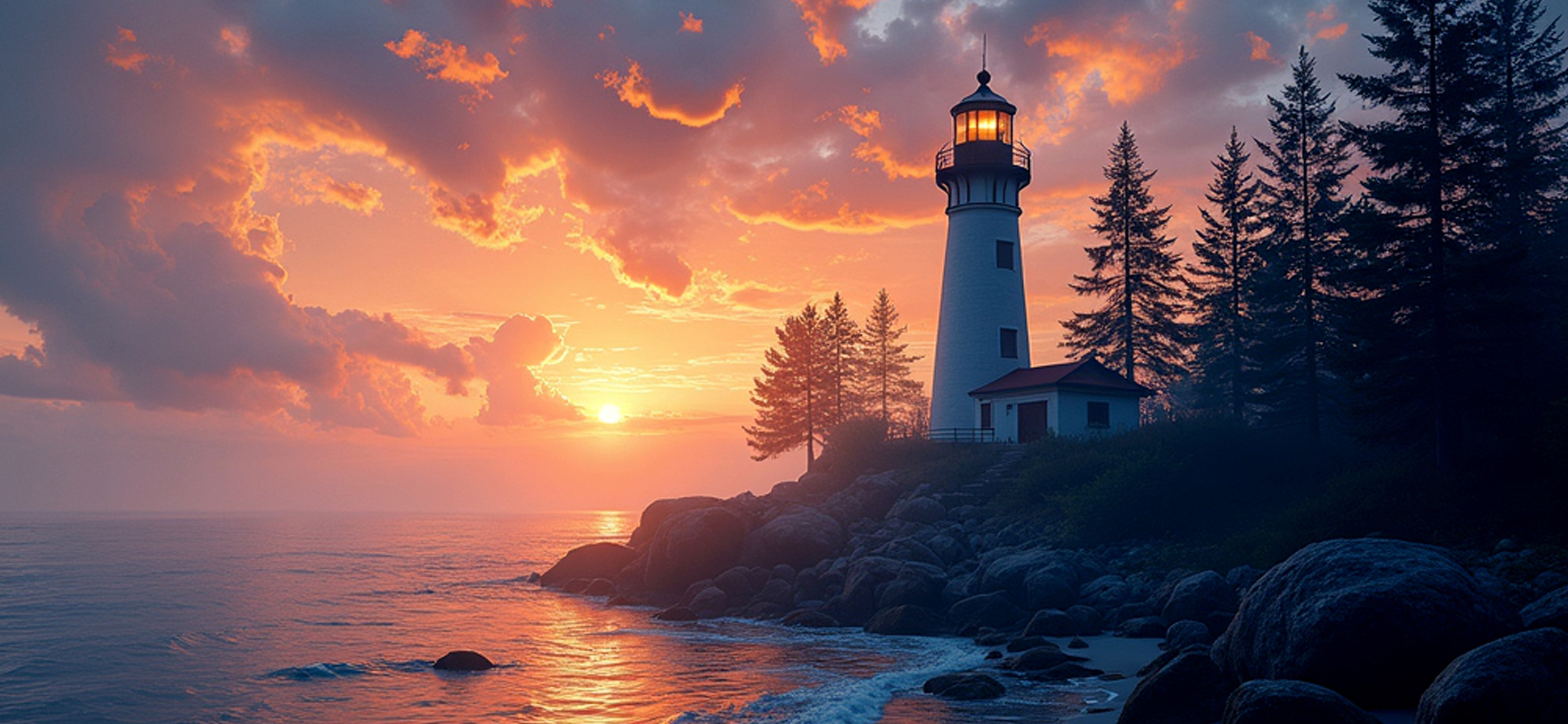
The dense fog of California, Oregon, and Washington that cloaks the coastline serves as an additional danger to sailor and lighthouse keeper alike. Each beacon of light at sea, whether renowned for its mystical attractiveness or its crucial function in coastal safety, is a monument both to nature’s unyielding forces and to the tenacity of humans who refuse to be swayed by those forces.
California – Pigeon Point Lighthouse
Standing 115 feet above the rugged cliffs south of San Francisco, Pigeon Point Lighthouse is one of the tallest lighthouses on the West Coast and a striking reminder of California’s maritime past. Since its construction in 1871, this tall, lighted tower has served the ships that pass dangerously close to shore.
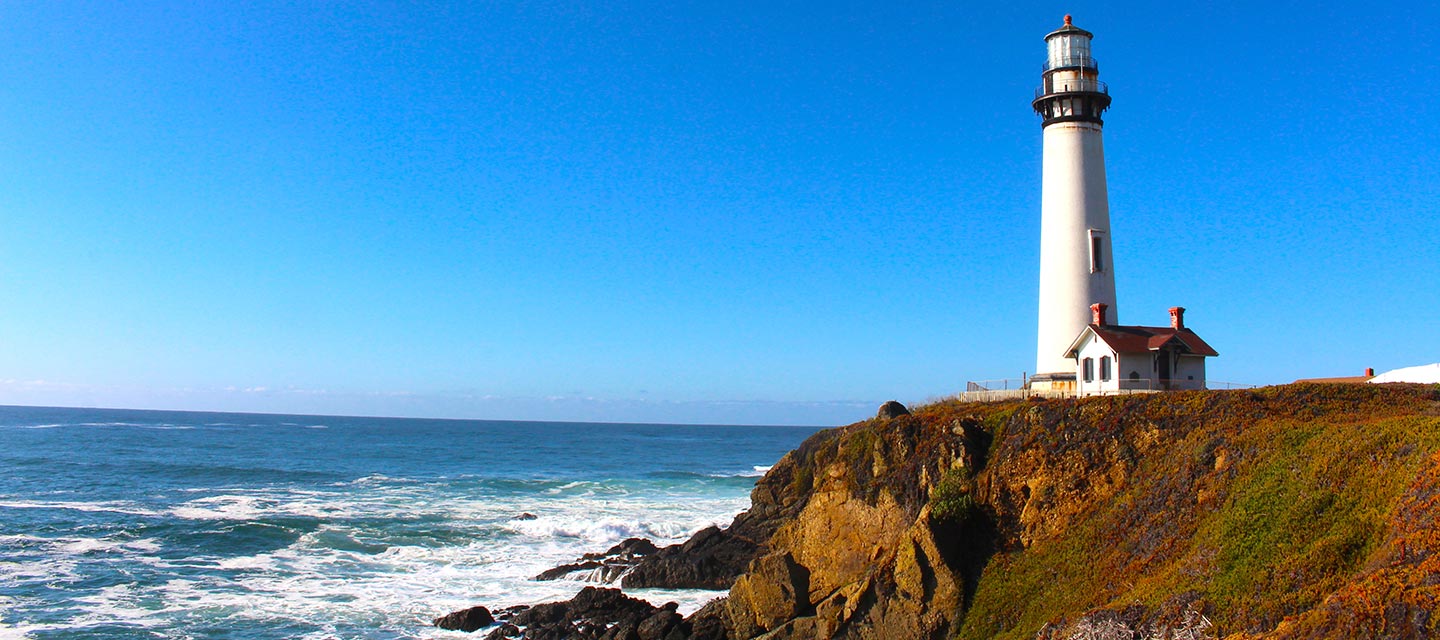
Even today, it’s an active aid to navigation, its powerful light cutting through the coastal fog. With a breathtaking backdrop of rocky shoreline and stormy waves, Pigeon Point is a favorite subject for artists and photographers. It’s also a rare opportunity to connect with California’s history and that of the lighthouse itself.
Oregon – Heceta Head Lighthouse
Heceta Head Lighthouse might be the most picturesque lighthouse in the country. Its dramatic cliff-top location and panoramic views of the Oregon coast make it an irresistible photo op. But beauty isn’t its only claim to fame; it’s also perhaps the most famous ghost lighthouse in the U.S.
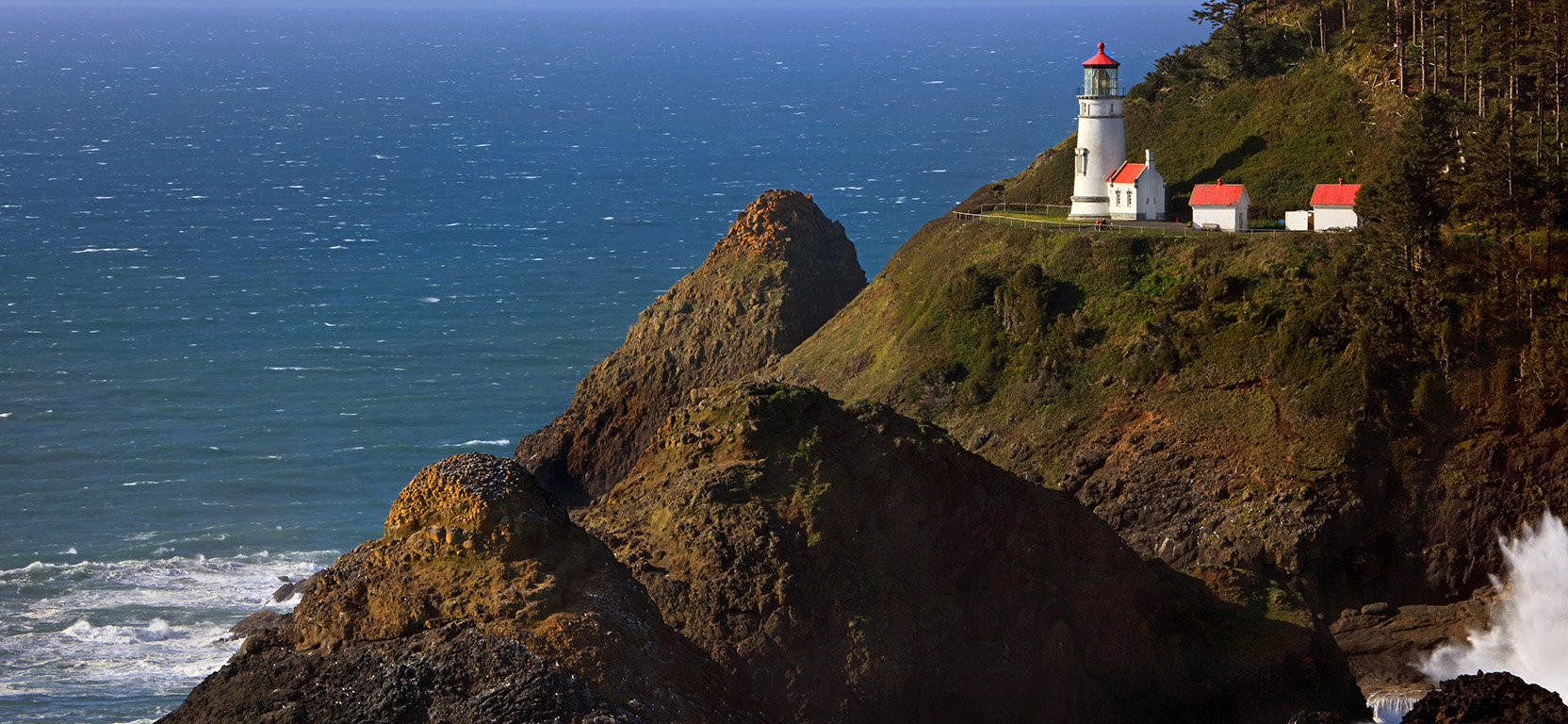
The locals and tourists who flock to this enchanting spot believe the lightkeeper and his family, who died under mysterious circumstances, still watch over the place a theory that guarantees the lighthouse an even more charming presence along a coastal trail already packed with pretty views.
Washington – Cape Disappointment Lighthouse
Though its name implies otherwise, the Cape Disappointment Lighthouse is nothing short of remarkable. It stands guard at the notoriously dangerous entrance to the Columbia River, keeping watch over what might be the most perilous stretch of water in the Pacific Northwest.
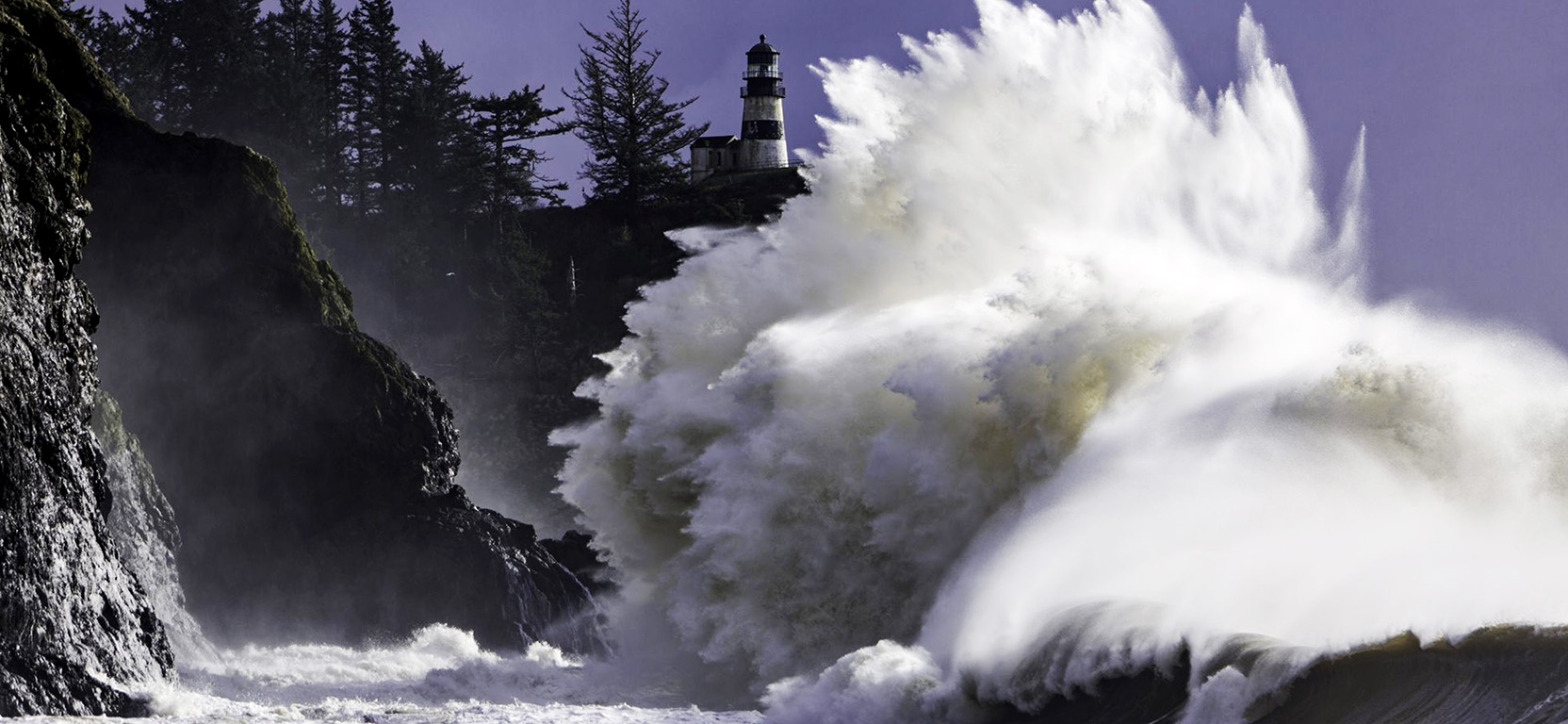
It is in that mantle that the 1856-built, 2nd-order Fresnel-lens lighthouse has long claimed prominence. One of the reasons the Cape Disappointment Light has not gone dark over the last 160 years is that it is more than a mile in linear distance from the mouth of the Columbia and thus well positioned to warn seafarers of the upcoming perils of navigating this portion of northwest coastline.
Great Lakes Legends & Gulf Coast Beacons
The lighthouses of the Gulf Coast and Great Lakes may be a universe apart in geography, but they share a legacy of leading sailors through stormy weather and unsafe waters. From century-old beacons in the heart of Michigan and Ohio to Gulf Coast structures that have brushed off more than a few hurricanes, the lighthouses in this book are far more than just pretty pictures or worthy subjects of a road trip.
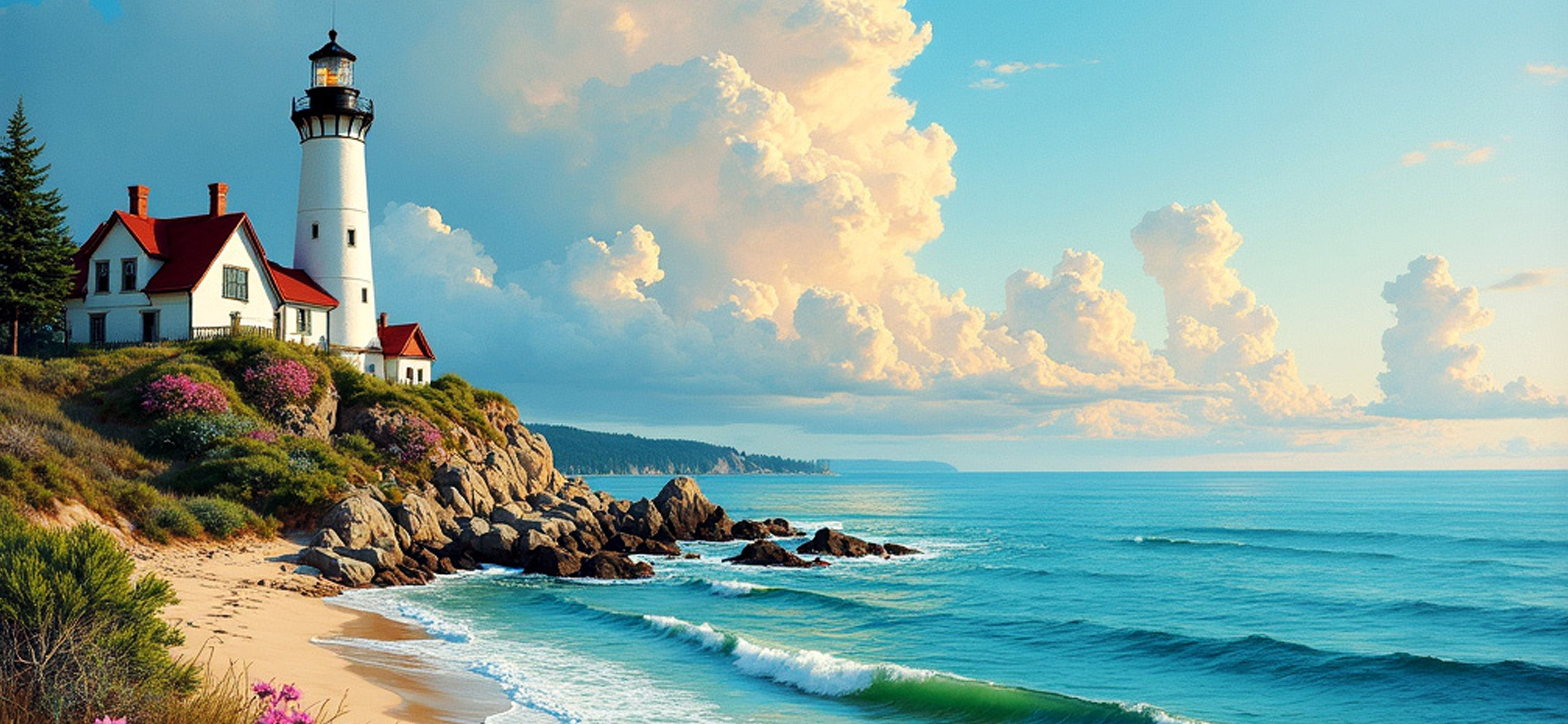
They are platforms for human expression and survival stories that are as different as the lighthouses themselves. Whether at the end of a winding road or in plain sight at the intersection of two highways, each lighthouse in this book welcomes sailors and visitors alike, with stories worth listening to in either direction.
Michigan – Big Sable Point Light
Perched atop the windy dunes of western Michigan, Big Sable Point Light is as remote as it is easy to see. Its black-and-white, candy-striped tower is one of the Great Lakes’ most stunning sights, and getting to it has a certain appeal that not many other lighthouses can claim.
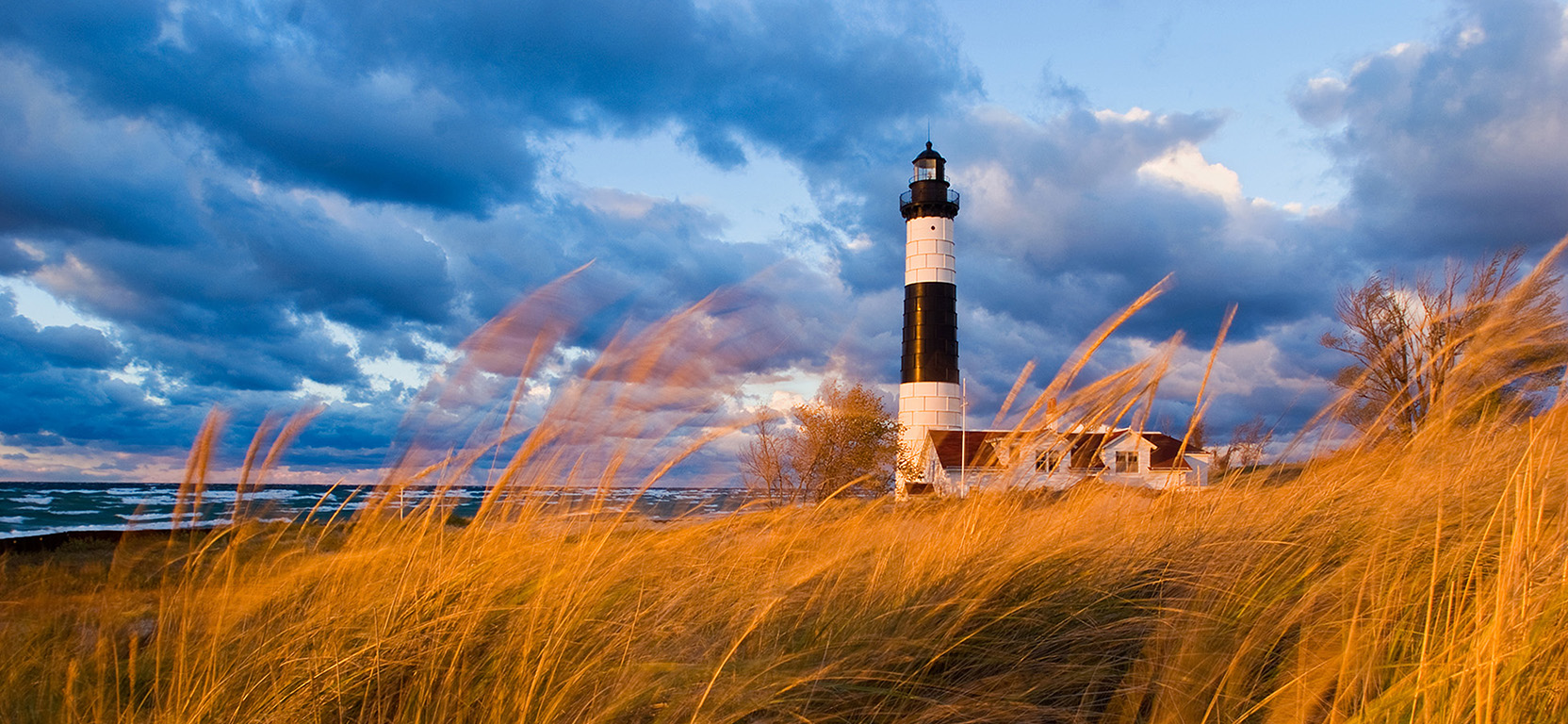
A trip to Big Sable, like the flower-grower on its beam, is hard-earned: Visitors must hike 1.8 miles through picturesque dunes and along the lake before reaching the lighthouse. Once there, the payoff is both immediate and long-lasting. Of all the buildings that used to spot Lake Michigan’s danger to navigation, few are as close to giving up as Big Sable Point Light. Yet here it stands, an old soldier with a freshly painted coat of armor.
Ohio – Marblehead Lighthouse
Of all the lighthouses that have come and gone around the Great Lakes, Marblehead lighthouse stands alone as the oldest, having been completed in 1822. Since that time, countless storms and squalls have swept over Lake Erie, the unpredictable moods of that water often taking lives.
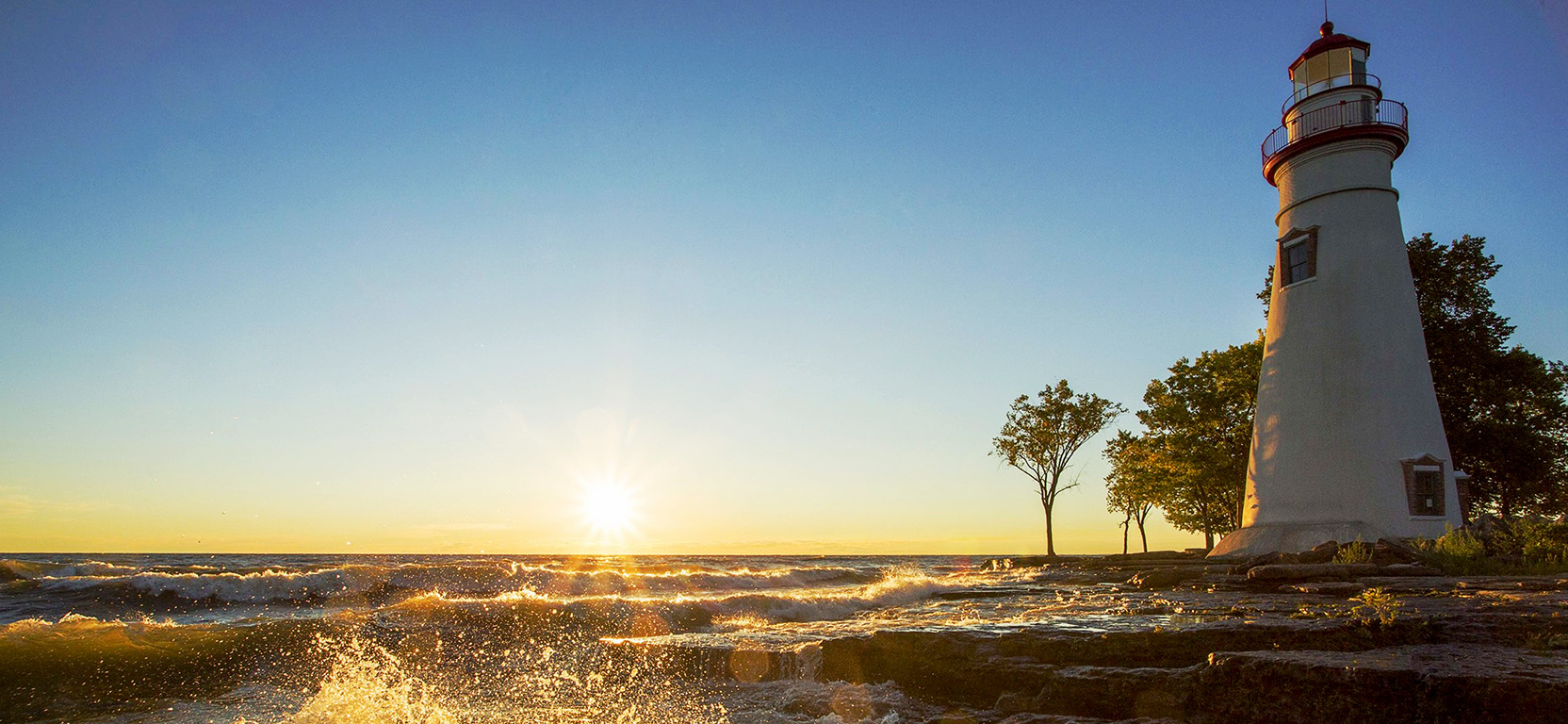
Yet the tower, stationed on a precarious perch above the lake, commands an unerring presence to this day. More than just a classic nautical monument, Marblehead has what most lighthouses can only dream of an amazing visitor center that gives the history of both the lake and the lighthouse.
Mississippi – Biloxi Lighthouse
Biloxi Lighthouse has a story as uncommon as any lighthouse can claim. Most lighthouses are situated on waterfronts; this one is placed on a highway, a truly odd position for a lighthouse. Built in 1848, Biloxi Lighthouse was one of the first cast-iron lighthouses in the South.

It has withstood quite a few hurricanes, Hurricane Katrina among them, and stands as a symbol for poor, pitiful, yet resilient Biloxi, which, like the lighthouse, keeps on keeping on through coastal storms and the architectures of modern roadways.
Shining Light on the Larger Picture
These beacons of light and hope, each with its own story, continue to enthrall visitors and stand as enduring icons of America’s sea heritage. Whether still directing vessels into safe harbor or serving as historic landmarks, they remind us all of the deep maritime connection that we as a nation have to the all-consuming blue.
Next, we come to the design. If you’ve ever thought about why so many lighthouses are covered with downright bizarre stripes and patterns, it’s not because their keepers had any kind of artistic streak. That was purely practical each one had a different look so sailors could identify them from way afar. The same goes for their lights. Before modern automation, lighthouse keepers (of whom there were once 12,000 in the U.S. alone) had to maintain and tend to huge oil-burning lamps that sometimes had Fresnel lenses.
These groundbreaking pieces of 19th-century technology could magnify light so that it could be seen for over 20 miles. And these keepers weren’t just enjoying the show from up top. They led really rough, isolated lives, had to work through some absolutely killer storms, and if they ever got sick or injured well, you can imagine. Some lighthouse postings were so far out that supplies were only delivered once or twice a year.
Naturally, automation ultimately took over for lighthouse keepers, and by the end of the 20th century, the majority of these coastal towers had gone dark. Today’s ocean-going vessels depend on radar and satellites, not distant blinking lights. Despite the darkened interiors, however, the lighthouses themselves have largely survived most as beloved historical artifacts, some as charming tourist spots, and others as still-functioning signposts for safety. In a time when society seems intent on replacing the old with shiny new things, the towers of light still standing probably say more about the era we live in than anything on this list.
Lighthouses are about more than simply showing the way. They symbolize endurance and providing a path through murky times, both literally and metaphorically. Maybe that’s part of what makes them so attractive.
